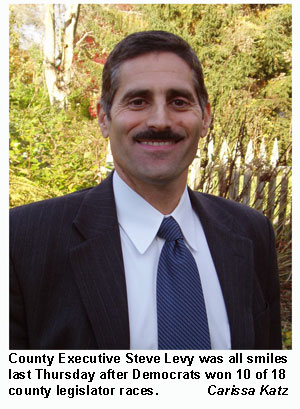Pool Hall Closes Doors
Pool Hall Closes Doors
Bailey's Billiards, after eight years in business, during which it was cited by Billiard Digest magazine as one of the best-designed pool halls in the country, closed its doors at the Springs-Fireplace Road One-Stop complex last month.
Bob Medved, the owner, said this week, "The bottom line was economics. It wasn't the landlord's fault, or my fault. You can only charge so much for an hour of play and so much for a bottle of beer."
"The saddest part of it," he added, "is that a lot of kids will miss it - a lot of kids and adults." Business had been good recently, Mr. Medved said, in answer to a question, though not so good that he could afford another hike in the 4,800-square-foot building's rent. "With a rent of $10,000 to $12,000 a month, you've got to be tremendously busy every night."
"Ten dollars an hour for the use of a table and $3 for a bottle of beer is as much as you can expect people to pay." Getting a beer license and Quick Draw had helped, he said, "but it's all relative - the beer license helped, but the rent went up."
Bailey's last day of business was Sept. 30. Since then Mr. Medved, who has a doctorate in oceanography and master's degrees in biology and statistics, has "been tying up loose threads." He had sold, he said, the 16 pool tables, each of which had cost $6,000 when new.
Asked what he planned to do next, Mr. Medved said he doubted he could land a job in academe, despite his impressive credentials.
"Tough Area"
"I've been out of the field for 10 years - I haven't kept up with the research, I haven't published. . . . I've looked into teaching at the high school level, but you've got to take two years of education courses to get certified. I'd do another pool hall, but you need a lot of space and the rents are so high out here, about twice what they are up the Island."
"It's a tough area for jobs - I don't just want to do anything, I want to do something satisfying."
In the end, he had "done everything I said I would do. There was some opposition when I opened if you recall. I promised I'd run a decent place for families, and that's what it was. I never had to call the police once. There was never a fight here. It was a place where kids and families could come and spend a little time. I did things for the high school, for senior citizens. . . . I ran the business as efficiently as I could run it. I feel good about what I did. But you can only charge so much - that's the bottom line."

